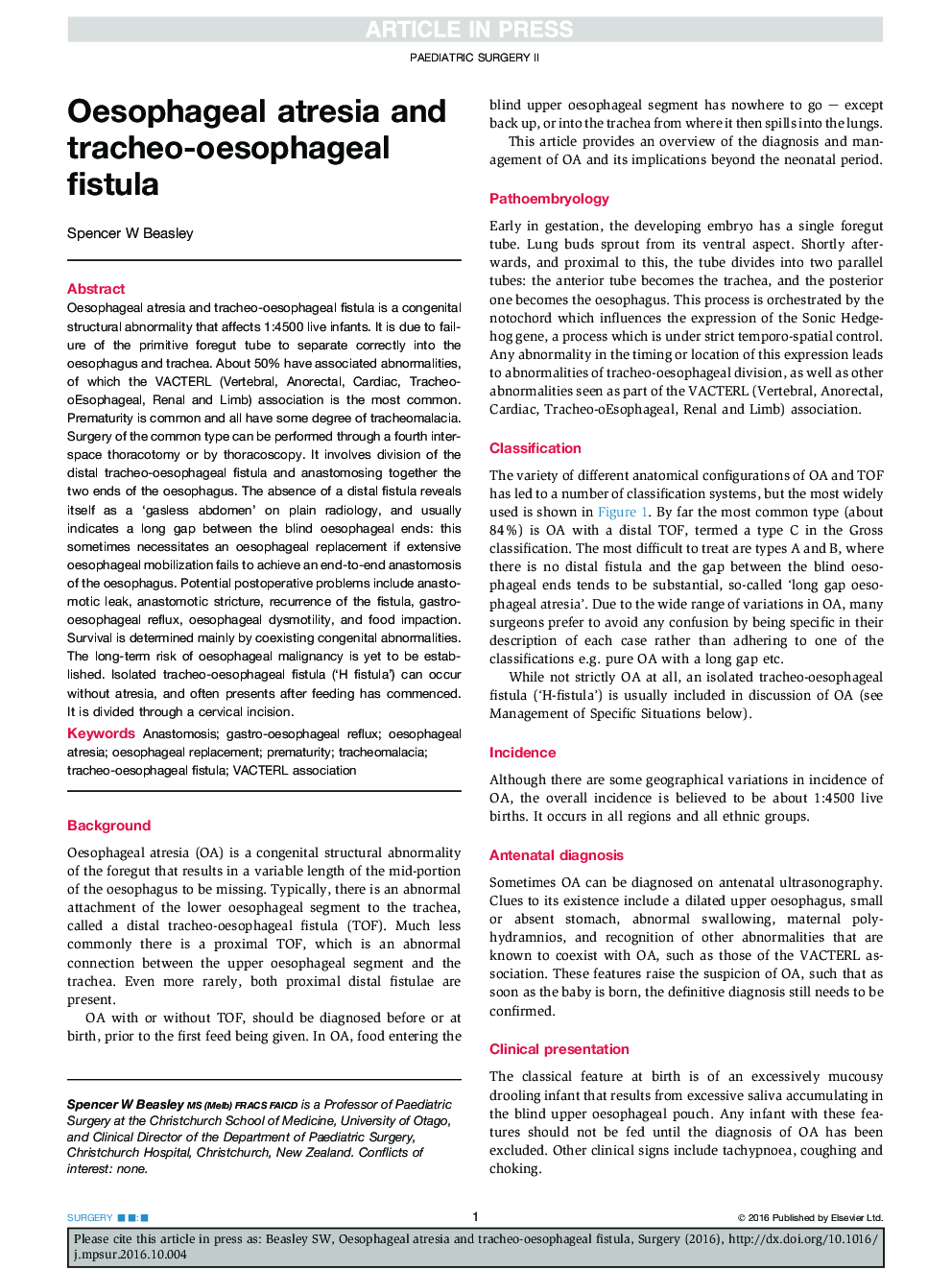| کد مقاله | کد نشریه | سال انتشار | مقاله انگلیسی | نسخه تمام متن |
|---|---|---|---|---|
| 5684837 | 1408993 | 2016 | 5 صفحه PDF | دانلود رایگان |
عنوان انگلیسی مقاله ISI
Oesophageal atresia and tracheo-oesophageal fistula
ترجمه فارسی عنوان
آترزی مزوفیل و فیستول تراشه و غذاخوردگی
دانلود مقاله + سفارش ترجمه
دانلود مقاله ISI انگلیسی
رایگان برای ایرانیان
کلمات کلیدی
موضوعات مرتبط
علوم پزشکی و سلامت
پزشکی و دندانپزشکی
پزشکی و دندانپزشکی (عمومی)
چکیده انگلیسی
Oesophageal atresia and tracheo-oesophageal fistula is a congenital structural abnormality that affects 1:4500 live infants. It is due to failure of the primitive foregut tube to separate correctly into the oesophagus and trachea. About 50% have associated abnormalities, of which the VACTERL (Vertebral, Anorectal, Cardiac, Tracheo-oEsophageal, Renal and Limb) association is the most common. Prematurity is common and all have some degree of tracheomalacia. Surgery of the common type can be performed through a fourth interspace thoracotomy or by thoracoscopy. It involves division of the distal tracheo-oesophageal fistula and anastomosing together the two ends of the oesophagus. The absence of a distal fistula reveals itself as a 'gasless abdomen' on plain radiology, and usually indicates a long gap between the blind oesophageal ends: this sometimes necessitates an oesophageal replacement if extensive oesophageal mobilization fails to achieve an end-to-end anastomosis of the oesophagus. Potential postoperative problems include anastomotic leak, anastomotic stricture, recurrence of the fistula, gastro-oesophageal reflux, oesophageal dysmotility, and food impaction. Survival is determined mainly by coexisting congenital abnormalities. The long-term risk of oesophageal malignancy is yet to be established. Isolated tracheo-oesophageal fistula ('H fistula') can occur without atresia, and often presents after feeding has commenced. It is divided through a cervical incision.
ناشر
Database: Elsevier - ScienceDirect (ساینس دایرکت)
Journal: Surgery (Oxford) - Volume 34, Issue 12, December 2016, Pages 612-616
Journal: Surgery (Oxford) - Volume 34, Issue 12, December 2016, Pages 612-616
نویسندگان
Spencer W. Beasley,
